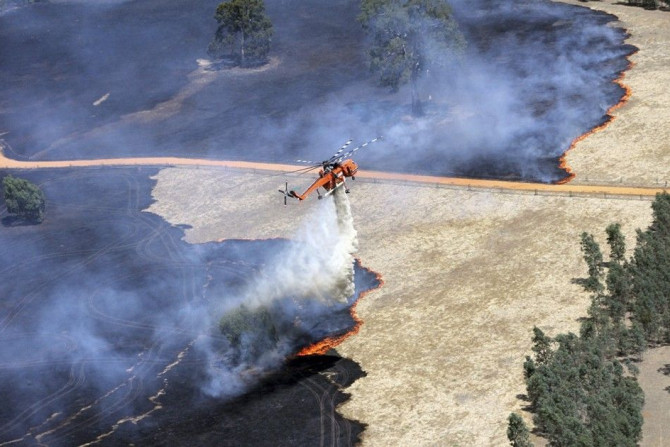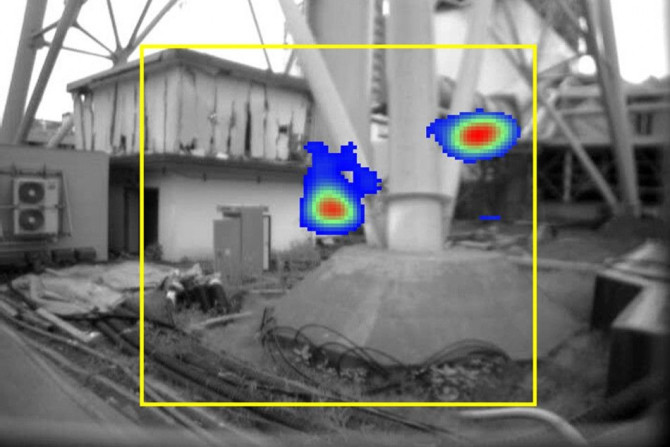Prince Charles and his son Prince William sat beside each other and delivered a message looking right into the eyes of the viewer
It took 58 years to discover a message in a bottle which was released in 1956.
"The Vampire Diaries" (TVD) star Ian Somerhalder tweeted about fashion retailer Lands' End banning the sale of items with Angora fur after seeing a PETA video of Angora fur farm cruelty. Somerhalder is a certified animal lover and the co-founder of the Ian Somerhalder Foundation (ISF) which was started to help animals, the environment and people as well as educate and empower mankind to make compassionate and sustainable choices for the planet earth and its inhabitants.
Bushfire morning update across the region
A team of Australian astronomers from the Australian National University has discovered a 13.6 billion year-old star which is currently the oldest known star in the universe. The latest find will give astronomers the chance to study the chemistry of the first known stars. Dr Stefan Keller, the lead researcher from the Research School of Astronomy and Astrophysics at Australian National University, declared that the discovery was a "one in a 60 million chance."
Since sports is still a male-dominated world, many female athletes, especially those who are in sports considered mainly for men, are suspected of not being real women because of their butch appearance.
The World Meteorological Organisation (WMO), the UN's weather agency, has confirmed that the year 2013 had indeed been the world's sixth hottest year since record keeping began in 1850.
Viewers can go outside and experience the planet activity happening this February 2014. The Harvard-Smithsonian Center for Astrophysics claims in the Epoch Times report that Mercury will be visible low in the west-southwest through Saturday, February 15, before vanishing by the end of the month.
‘Snotty’ 1.5 metre monster was found lying by the shore
Waves as high as 60 feet that lashed along Britain's shorelines have washed out portions of a 150-year old railway line into the sea. Residents have been advised to brace for more rains and potential flooding into the weekend.
No more than 500 people so far have been able to watch new-born baby polar bear amid raw nature
Australians would not be too proud to hear that the land Down Under is considered the most unfriendly country to the environment around the globe.
A family of rabbits has dug up buried treasure believed to be 8,000 years old near Land's End, England. The wild rabbits uncovered a "gold mine" of archaeological finds dating back to the Stone Age which includes flint tools, arrow heads, and animal hide scrapers.
The recent shark cull protests have triggered fears of disrupting the ocean's ecosystem if Western Australia is allowed to continue killing sharks. Since the first shark was killed on Australia Day, Jan 26, at least one more shark was killed while trapped in baited drum lines and smaller sharks were released after getting caught.
An unnamed couple from West Greenwich, Rhode Island filed a report to the Mutual UFO Network (MUFON) about their UFO sighting experience in the area. The MUFON Case Management System listed the UFO sighting as Case No. 53853 where the two witnesses recounted seeing and capturing images for evidence of the two black discs that they spotted above the sky.
Colin Rankin, Canada's first test tube baby, is now a first-time father. But compared to his father and Uncle Gregory, Colin's twin, whose birth made swooping headlines 32 years ago, baby Clark was conceived and born the old, traditional way.
Elizabeth Starr has a very big problem and she wants to get if off her chest as soon as possible - literally. Ms Starr, a mother of two and actress in porn movies, had string breast implants in 1999 which caused her mammary glands to produce a serum that keeps on filling the implant pocket.
Because of a susceptibility gene, emerging and getting rampant H7N9 flu virus may only infect residents of China.
U.S. researchers will be fishing California fish kelp off the waters of Malibu to test and determine the levels of radiation they have received from the radioactive material spewed into the ocean waters by the crippled Fukushima nuclear power plant.
Australian researchers believe to have found the world’s oldest rock dating 900 million years earlier
Can you imagine the tiny, eeeky, dirty rodent rat growing into the size of a sheep or worse a cow? A scientist from the UK said it is highly possible. We humans may ought to brace for the onslaught of rat armageddon.
Medical Journal of Australia evaluates Federal Government’s Food and Health Dialogue
A report from World Health Organisation found that a worldwide killer remains on the rise year per year.
The Super Bowl football fans were not limited to the ones who headed to the stadium or watched it with friends on live stream television on Feb 2. NASA football fans all the way from space also got a view of the popular Super Bowl MetLife Stadium.
After having been speculated as the making of aliens and even the effect of World War II bombs, biologists reveal the closest answer to the phenomenon and that it was caused by poison.
In 2010, a young Filipino celebrity couple was the subject of speculation because of rumours that they were rushed to a big Philippine hospital in a vaginal lock while lovemaking. Anstomenis Exadaktylos, a Switzerland- based physician and author of a study covering 11 years of emergency hospital admissions, believes stories like that are probably urban myths.
A team of nuclear experts from the United Kingdom is currently being lined up to help in the decommissioning of the crippled Fukushima power plant in Japan. They are engineers from Sellafield, where one of Britain's worst nuclear accident, occurred.
At least three people have died as heavy rains continued to hit central and southern Italy three days now. The heavy rains and floods have not only caused deaths but also power cuts, road obstructions and other damages.
New research suggests that Geranium plants may hold the key to new generation of HIV treatments that inactivates HIV-1 on invading human cells. Extracts contain compound that attacks the virus and prevents replication in the human body.
UN plans to list the Great Barrier Reef as worlds “in danger” heritage sites
















